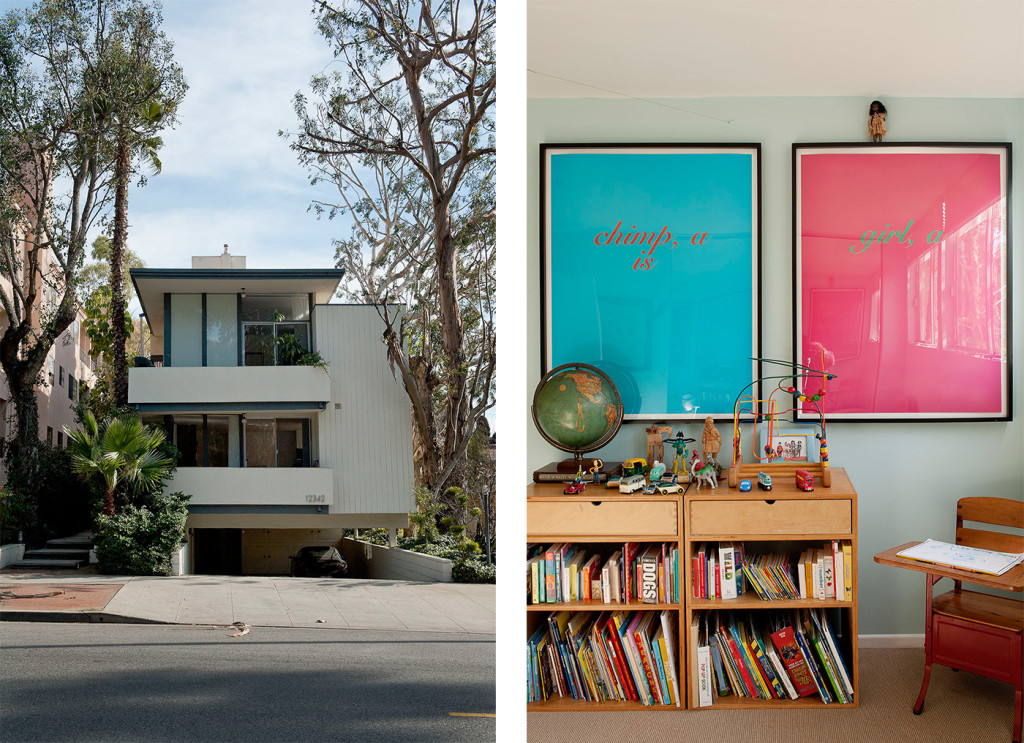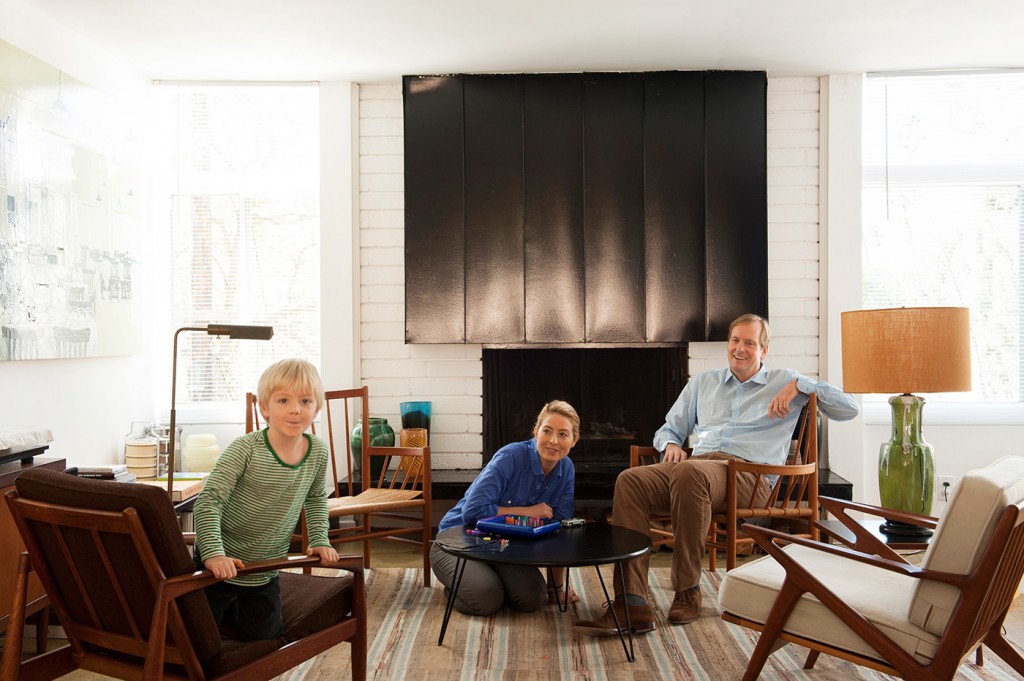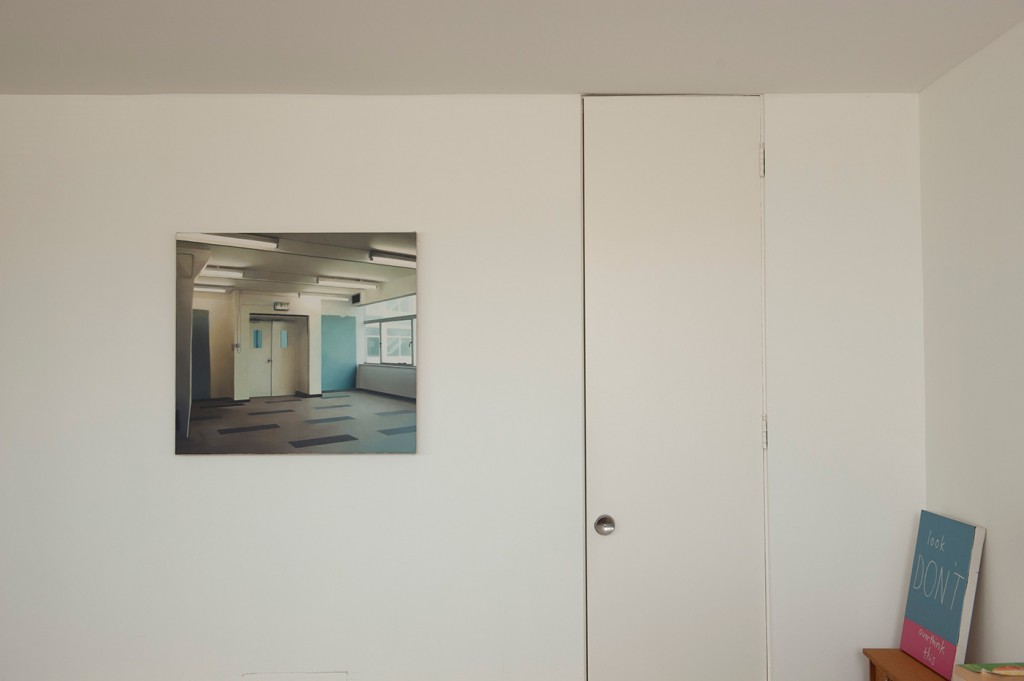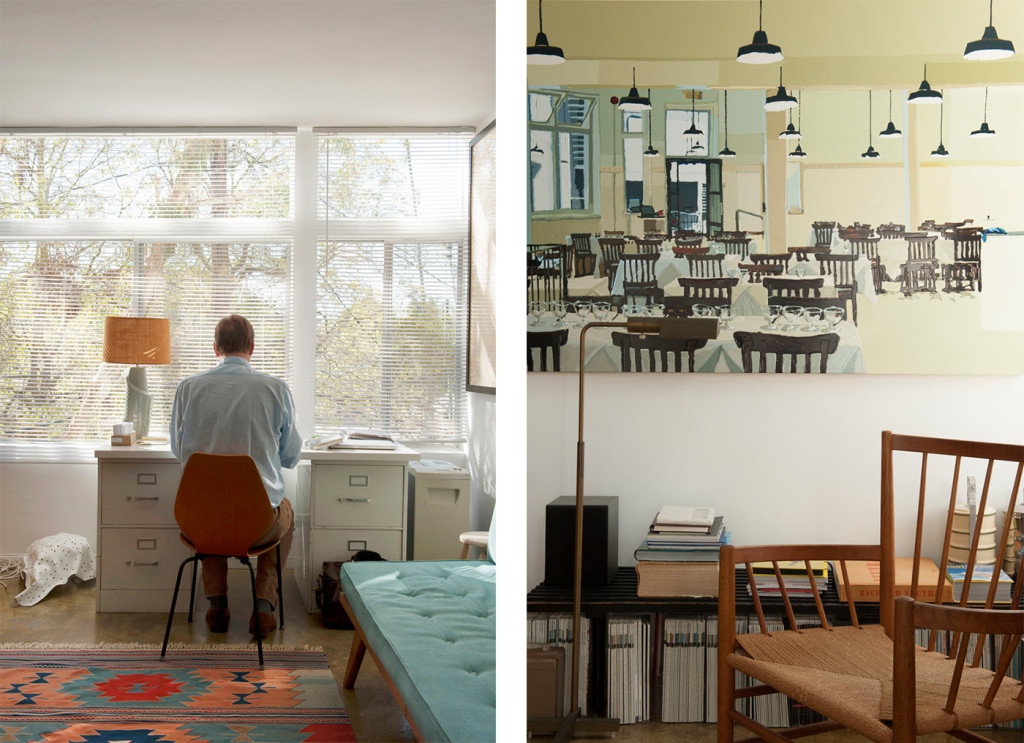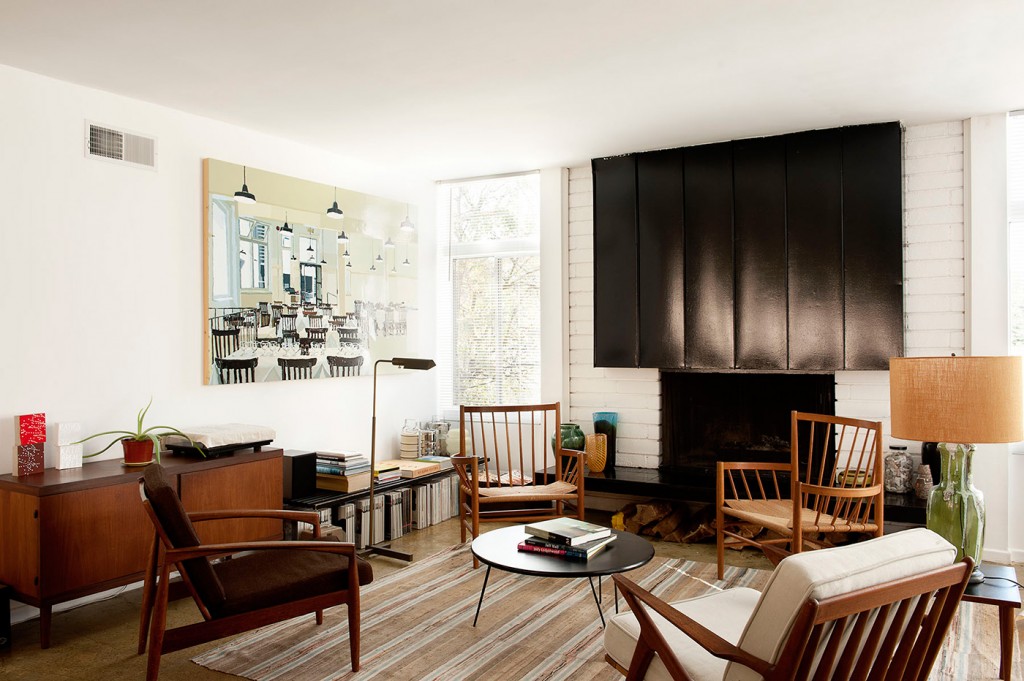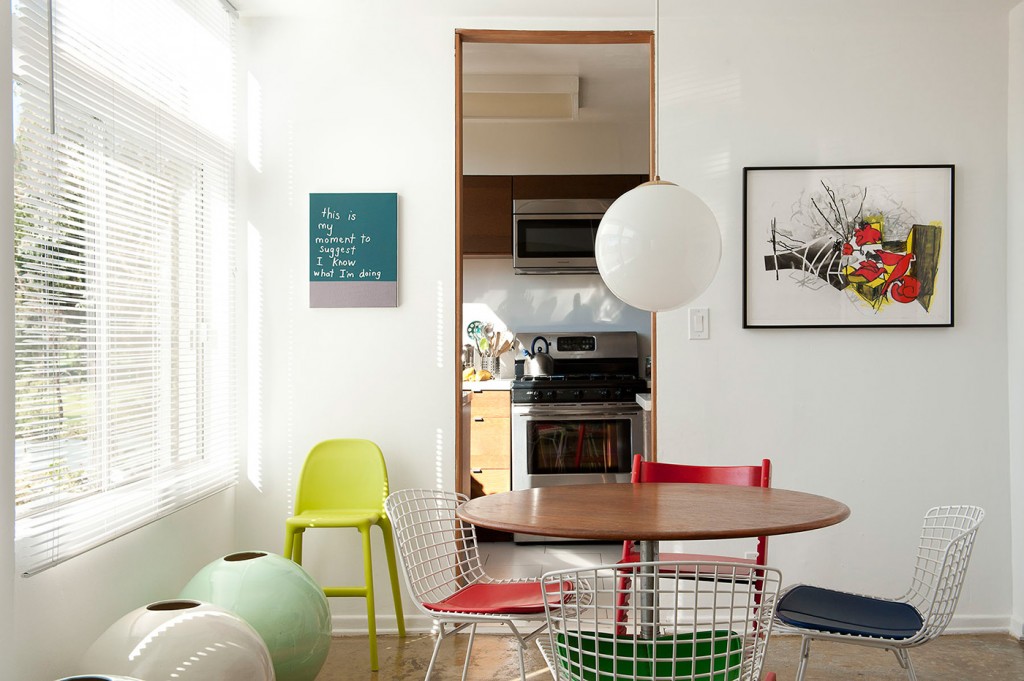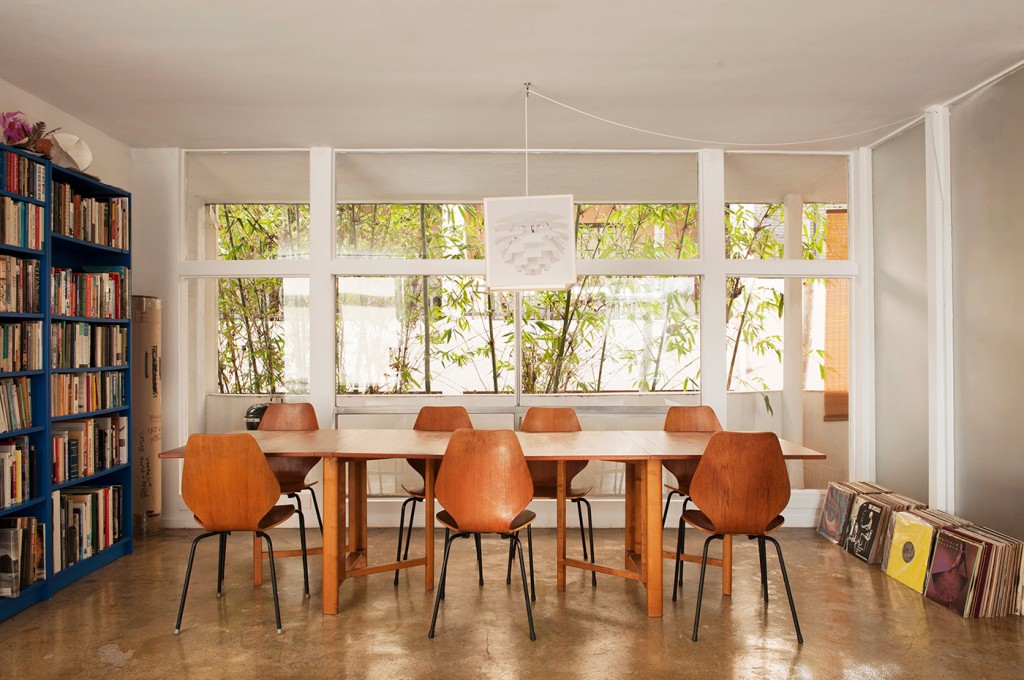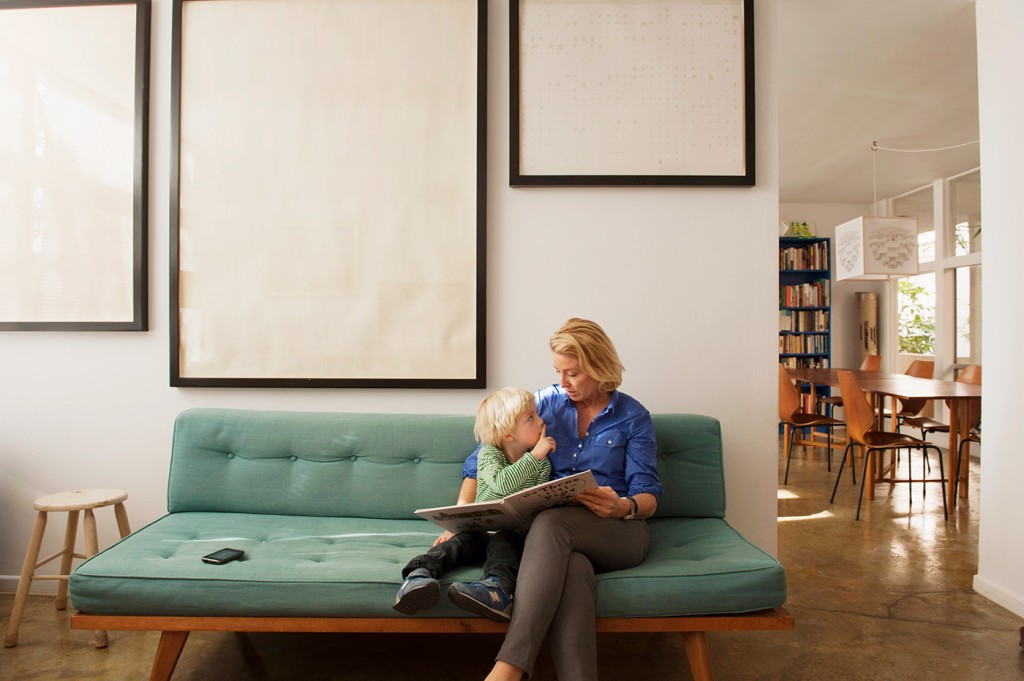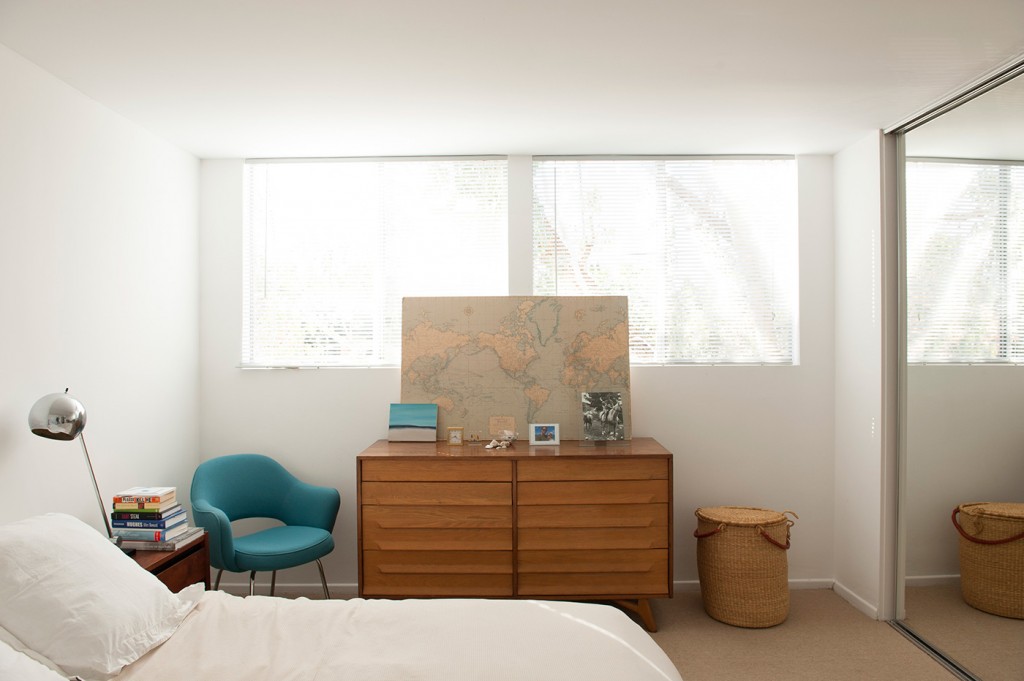This art collector created his own display space in a 1950s Los Angeles apartment designed by the pioneering modernist designer A. Quincy Jones
A gallery director and art collector’s 1950s LA home
There are a few lofty rumours circulating about Brian and Kate Butler’s address in Brentwood, Los Angeles. One is that the clean-lined 1950s apartment building, crouched beneath palms in an area better known for its stately family homes, was designed by A. Quincy Jones, a pioneer of modernist design who helped define the elegant Southern Californian aesthetic. Another theory is that it was a creation of mid-century master Gregory Ain. And word has it that Frank Gehry lived upstairs at one point.
Brian periodically prods his neighbour to find out the truth. Brooke Hodge is, after all, a director at the Hammer Museum and architectural historian who has recently written the book A. Quincy Jones: Building for Better Living. But for the moment, its pedigree remains a mystery. What’s clear is that the building draws people with an appreciation of fine design.
Brian moved there in early 2009, shortly after he returned to Los Angeles from a three-year stint as director of Artspace in Auckland. His son Thomas was born while Brian and Kate, an actor, were in New Zealand, and although it was fine at first to have a baby hammock in Brian’s one-bedroom Santa Monica apartment, as Thomas grew the family was soon on the hunt for more space.
Just like the New Zealand quarter-acre paradise, the Californian expectation is a house and a yard with enough room for a lawn and a barbecue. But renting was a more attractive option when dealing with a housing market ravaged by the global financial crisis, and the Butlers found themselves an apartment in this sought-after area, across the road from the verdant Brentwood Country Club. Gwyneth Paltrow recently picked up a mansion in the same neighbourhood.
“The Great American dream is that you’re supposed to buy a house,” says Brian. “But there is a counter idea to that, when rents are not that expensive you can live in a good area. And we have the same problem that Auckland has, that people want to go to good public schools.” Another thing Los Angeles has in common with Auckland is the glacial development of a public transport system. There are plans afoot but it may be 15 years before Brian is able to catch a subway down Wilshire Boulevard to his gallery 1301PE, nearby the major art institutions of Miracle Mile.
Space is a matter of perspective. The airy, light-filled apartment has a balcony for that all-important barbecue, an open dining and living area, a play area for Thomas (now aged 4), an office and two bedrooms. “I’ve had friends from New York say, ‘Wow if I had this apartment in New York, I’d be so over the moon I wouldn’t know what to do with myself,’” says Brian.
The Butlers did little to it when they moved in, apart from install some blinds and liven up Thomas’s room with duck-egg blue paint. The bare concrete floors, whitewashed walls and that crisp, timeless 1950s construction provide a fitting environment for the art collection that Brian has accumulated during a career working with top contemporary artists from around the world, including many familiar New Zealand names.
The unmistakable wit of John Reynolds turns up on canvases in the living room and bedroom. The turquoise and silver one that reads, “This is my moment to suggest I know what I’m doing” was given to Brian by the artist as a going-away present when he left Artspace.
A shelf in the hallway has an array of art objects including a ceramic pie by Tessa Laird with changeable labels – cottage, steak and cheese, steak and mushroom. While working in New Zealand Brian earned a reputation as a pie fan; everywhere he went colleagues would direct him to the best local pie shop. He’s actually more enthusiastic about Ralph Hotere’s mutton-bird recipe, as prepared by Dame Jenny Gibbs. “I became the great white champion for mutton birds,” says Brian.
The couple’s dining table, by Swedish furniture designer Bruno Mathsson, has been to Auckland and back and while there are no mutton birds on the dinner-party menu these days, the expandable design can fit a sizeable feast, accommodating 10 people. Most of the Butlers’ furniture is mid-century Scandinavian. Brian has the good fortune of having parents who have been avid collectors of Danish design and he’s been the willing beneficiary.
Above the table is one of many items in the home that straddle art and function. The light was part of a show Brian curated at Artspace by Copenhagen art collective Superflex. The work pushes the boundaries of copyright law by taking images of popular designs, such as this ‘PH Artichoke’ lamp by Louis Poulsen, and creating a new light. The white, diamond Bertoia chairs with red, green and blue cushions are an edition Brian made with artist AA Bronson – the surviving member of Canadian art group General Idea that came out of the late 60s and early 70s. The other members, Jorge Zontal and Felix Partz, both died of AIDS in 1994.
Brian knows so many of the artists in his collection that every work has a story. There’s German enfant terrible Martin Kippenberger, a light installation collaboration between Cuban Jorge Pardo and French artist Philippe Parreno, Los Angeles painter Kirsten Everberg, a Richard Diebenkorn etching, New Zealanders Fiona Connor, Kate Newby, Peter Robinson, et al. and a splendid portfolio of portraits by great German-born British artist Frank Auerbach, which was the first thing Brian bought after university. “He had just finished them and they were like £900 or something. Outrageous.”
The works are very much a part of Brian’s daily life and he updates them regularly with pieces from storage. Some of his collection – such as a sculpture by Los Angeles artist Charles Ray with a 2m x 2m piece of glass through it – are going to have to wait until he’s found that bigger house.
For now, Brian and his family enjoy apartment living in sprawling Los Angeles. It is a mere five-minute bike ride from Luxxe cafe, which serves the closest thing Brian can find to a flat white. “People are like, ‘Oh you should move’. But I say ‘No, it’s too far from Luxxe’,” says Brian. He takes me along to prove it, and he’s right. It’s just like a cafe at home – except for the casually chic gentleman at the next table with a miniature pig on a leash.
Q&A with Los Angeles gallery director Brian Butler
HOME What stimulates a change in the art you display at home?
Brian Butler The acquisition of new work is always a good occasion. We are always rotating and resting works on paper. But my favourite reason is to just keep looking and thinking about art.
HOME What aspects of the apartment do you enjoy the most?
Brian Butler We love the light airiness and the feeling of being in the trees. The apartment is well-proportioned and generous.
HOME If there was another period or style of architecture in which you’d live, what would it be and why?
Brian Butler That’s tough. I would love to live in a house by Irving Gill from the 1910s but a Georgian townhouse would be great too…or work with a living architect. There are many styles or periods but it is the whole package of architecture and the location.
Words by: Frances Morton. Photography by: Emily Andrews.
[related_articles post1=”61371″ post2=”61259″]
